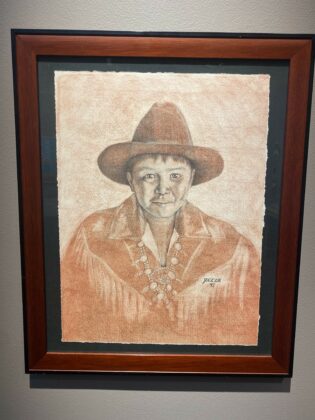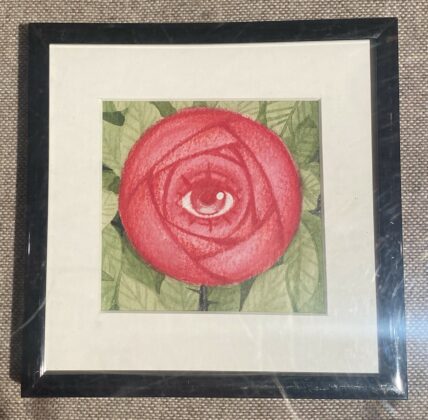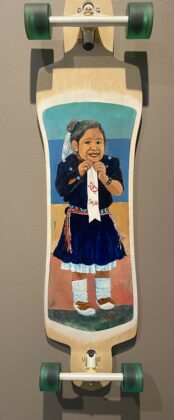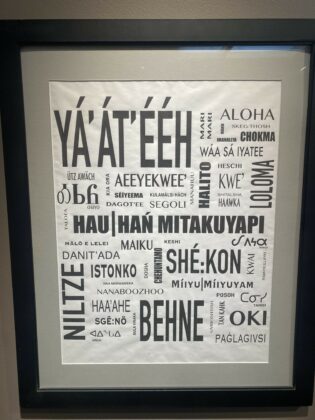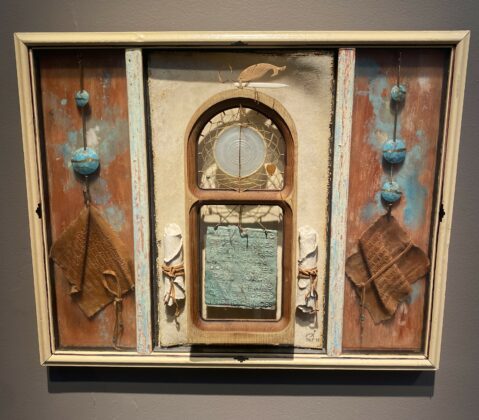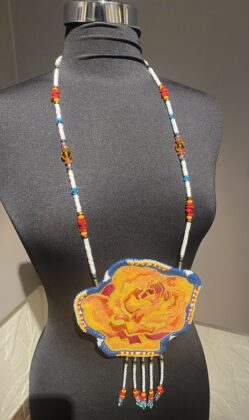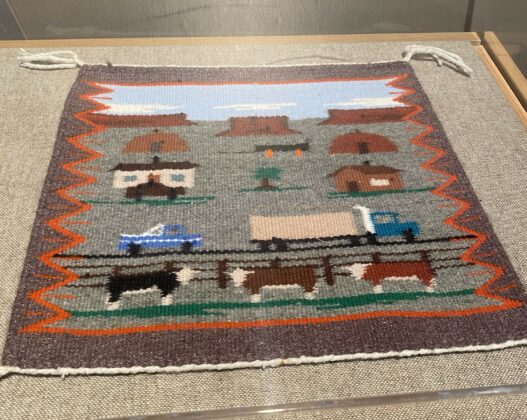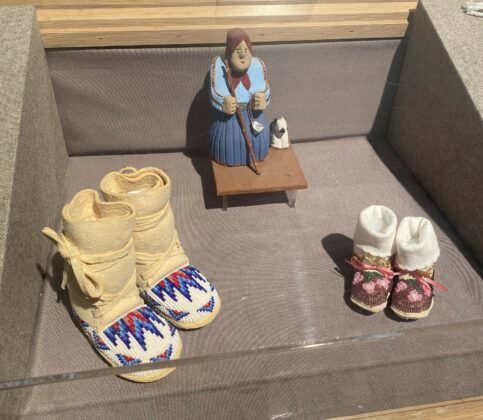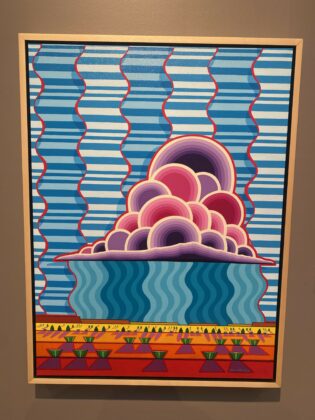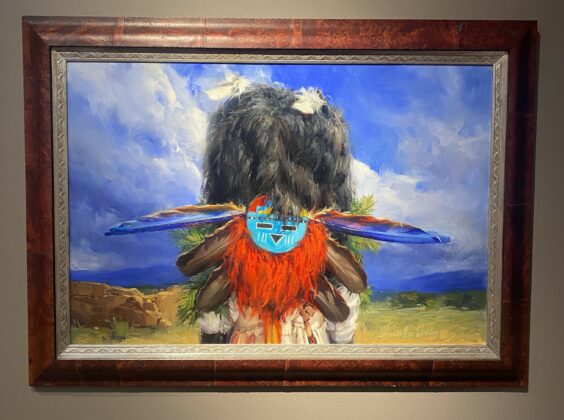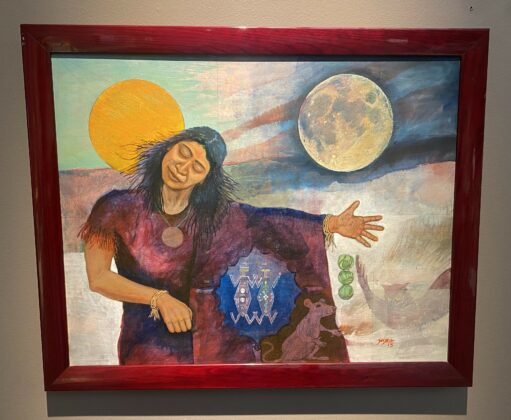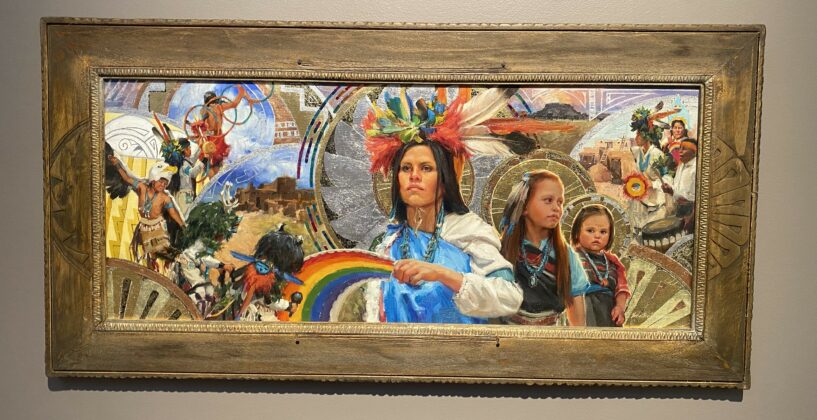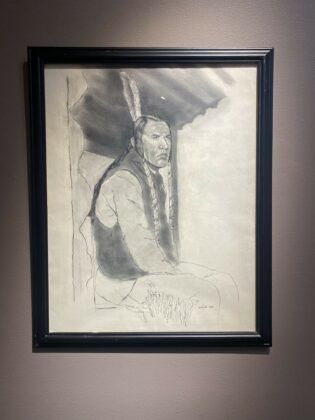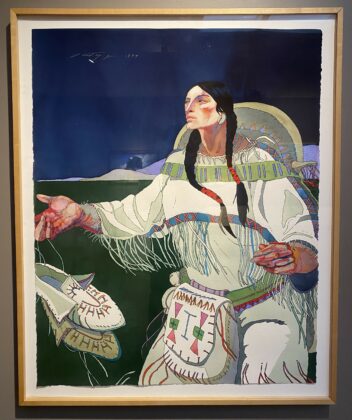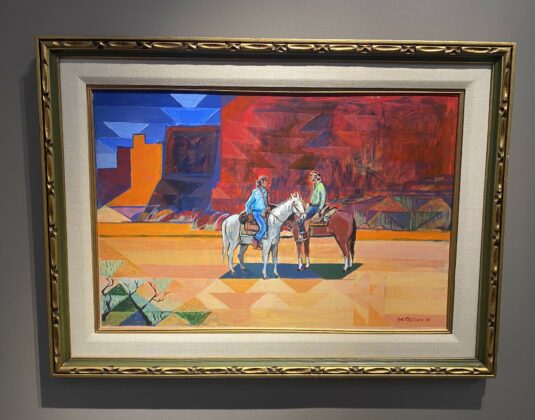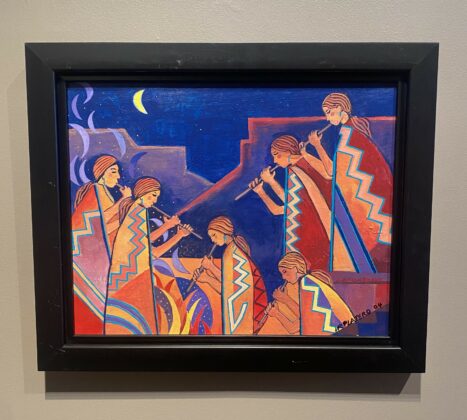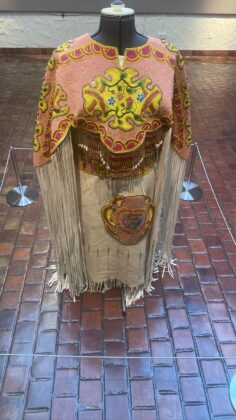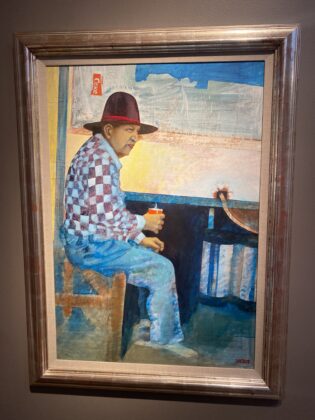The Springville Museum of Art clarified that the narrative of Cyrus Dallin’s Massasoit statue seeks to tell the story from his perspective. The museum provides a place for modern-day Native American artists in its “Contemporary Voices” exhibit.
The Massasoit statue, which depicts the Wampanoag chief Ousamequin, was sculpted by Cyrus Dallin of Springville, Utah, in 1921 on a commission for Plymouth Rock, Massachusetts. He donated the cast to the Springville Museum of Art and then various duplicates were made, including the one on the BYU campus on the west side of the Harold B. Lee Library.
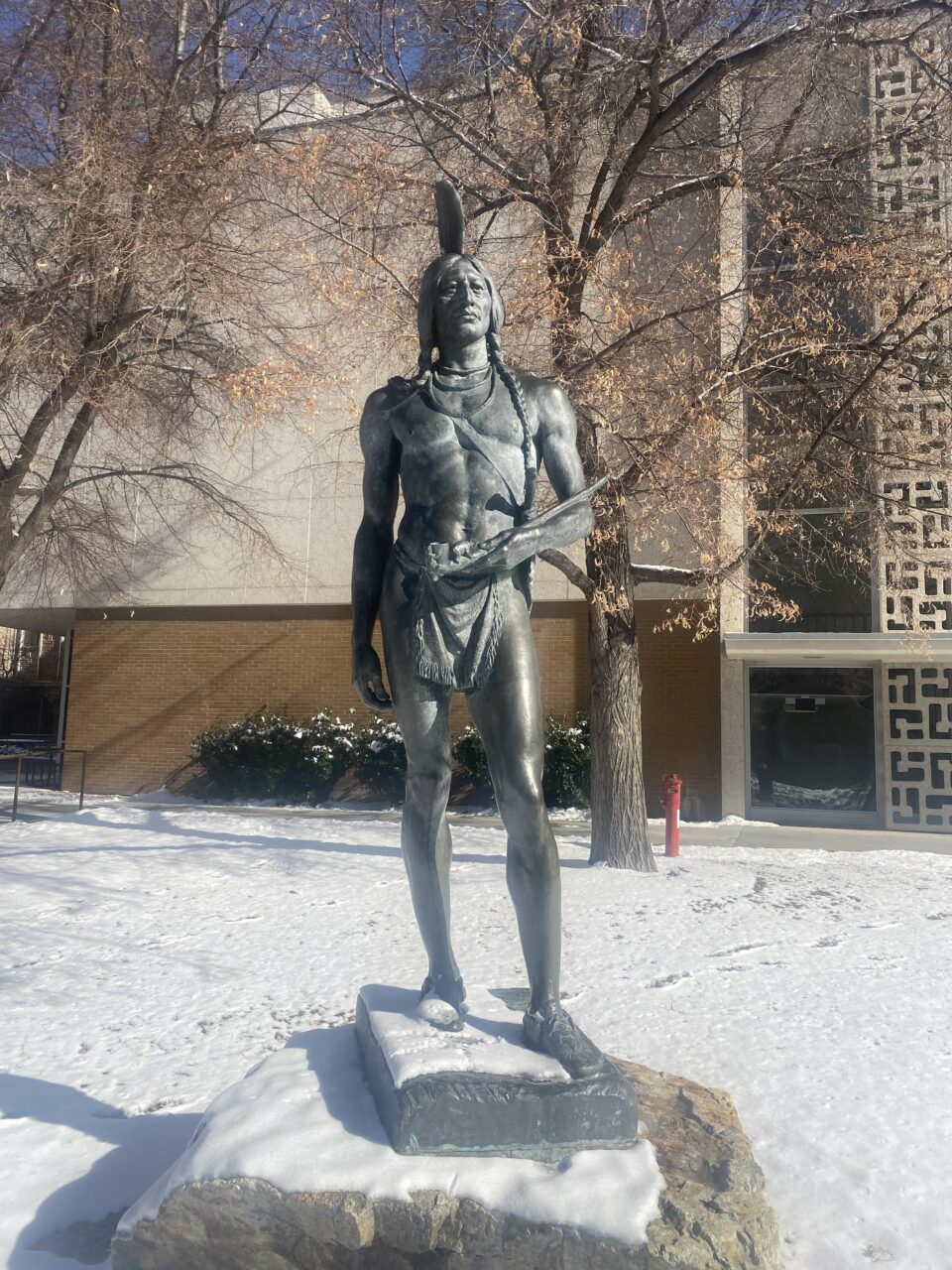
BYU professor Jenny Hale Pulsipher, a scholar on Northeastern Native American history, explains the different perspectives of story of Ousamequin. (Joshua Rust)
Emily Larsen, an associate director at the museum, wants the exhibit, open until March 24, to give Native Americans a voice to tell their own narratives. This goal directly influenced the changes done to help patrons understand the museum’s original Massasoit exhibit.
“It is a depiction by a white artist of a Native American leader that’s not even from this area, so a lot of people misinterpret it if they don’t know the context of the sculpture and why it was commissioned,” Larsen said.
The contributors to the Contemporary Native Voices Exhibit, such as Larsen, acknowledged one of their goals is to provide different perspectives from common ones taught in schools and popular media.
“One of the misperceptions is the idea that all Native Americans are alike and we are just one tribe,” Brenda Beyal, a Diné (Navajo) woman from Tohatchi, New Mexico, said.
Beyal contributed directly as a project consultant for the Springville Museum of Art and feels strongly about the part Native Americans have to play in modern-day art.
“I feel like as a Native American, it is time to change other people’s stories about us and it is time for us to reinforce the true stories. And I think it can be done through art,” Beyal said.
The individual artists also benefit from a stage to display their art and perspectives.
“The narrative is changing for Native artists because here’s a museum that made a call for them to share their art. I think it helps to elevate their own identity as an artist,” Beyal said.
For Beyal and many of her colleagues, art transcends visual boundaries and can act as a fusion of cultural and educational elements. More contemporary Native American art is housed at the Utah Natural History Museum, the Museum of Peoples and Cultures and the Modern West Fine Art Gallery in Salt Lake City.

